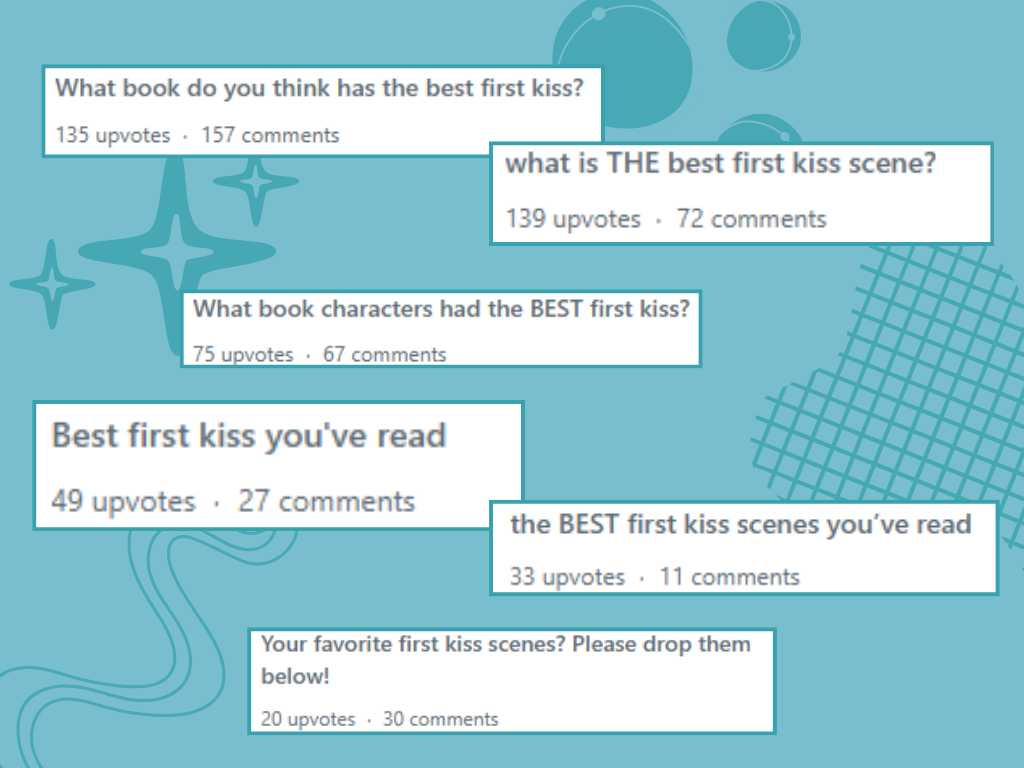Advice for writers
for writers
The Art of the Kiss: Balancing Emotion, Chemistry, and Consent

How to Write a Great Kiss Scene
As a writer, reader, and editor, I’ve seen countless kiss scenes—from heart-fluttering slow burns to off-the-rails insta-love—and I’ve learned that writing a truly impactful kiss requires more than just describing mouths meeting. It’s about building emotion, layering chemistry, and showing that consent is not just present but magnetic.
Whether you’re writing romance, fantasy, or literary fiction, crafting a kiss scene that resonates is a powerful storytelling tool—and a delicate art!
Why Are Kiss Scenes So Important?
Kiss scenes carry emotional weight. They often represent a turning point in character development or signal a major shift in the relationship dynamic. They can be climactic (in every sense) or quietly intimate. A kiss can heal, ignite, confuse, devastate—or all of the above.
For readers, the kiss scene is often the moment they’ve been waiting for. Romance fans across the world consistently point to the first kiss as one of the most memorable and emotionally satisfying parts of a story. Entire Reddit threads are devoted to favorite first-kiss moments, and writing coaches like those at Write with Harte emphasize that the buildup to a kiss—when done well—can heighten the emotional payoff exponentially.

The kiss scene is a pivotal moment, one where character arcs, romantic tension, and emotional stakes often converge. If that payoff falls flat, readers notice.
So how do you make sure yours hits all the right notes?
What Should Happen Before the Kiss?
The kiss should never feel like it’s dropped in out of nowhere. It should be earned.
That doesn’t mean every kiss needs pages of buildup, but it does mean the emotional groundwork should be laid.
Ask yourself:
Have I built enough tension between the characters?
Have I shown their internal conflicts or vulnerabilities?
Is this moment an answer to a question the story has posed—about connection, loneliness, longing, or change?
Example: Emotional Setup Before the Kiss
In The Night Circus by Erin Morgenstern, the kiss between Celia and Marco is electric because it comes after chapters of magical tension and emotional stakes. When it finally happens, it’s not just romantic—it’s narratively earned.
How Do You Build Chemistry on the Page?
Chemistry isn’t solely about physical description, though sensory detail helps; rather, it’s about the push and pull between characters: what’s said, what isn’t, the stolen glances, the silence that hums.
Character Reactions > Character Descriptions
Rather than simply describing physical features like lips, hands, or jawlines during a kiss scene, the real power lies in conveying how your characters feel internally. What sensations ripple through their bodies? How do their emotions manifest physically—nerves, desire, hesitation, hope?
Drawing readers into the characters’ internal experiences makes the moment more immediate and emotionally compelling. Use internal monologue and subtle physical cues to bring those feelings to life.
“He touched her wrist, and something in her stilled—like her whole body had been waiting for this without realizing it…”
Vary the Pacing
Pacing shapes how readers experience the kiss scene. Sometimes slowing…the moment…down heightens the intensity, making each breath and heartbeat feel more charged. Other times, quick, sharp sentences can convey breathless urgency and excitement. Thoughtful control over sentence rhythm pulls readers deeper into the characters’ emotional experience.
“She didn’t breathe. Not when he leaned in. Not when his hand found hers. Not even when their foreheads touched…”
Let the Space Speak
The world around your characters is more than just scenery—it reflects and amplifies their emotions. Whether the setting is hushed and still or chaotic and loud, the contrast can deepen the emotional resonance of the kiss. Use sensory details to show how the external environment interacts with their intimate moment.
“Somewhere, someone was yelling. Doors slammed. But in the space between them, there was only silence—warm and waiting…”
What Does Consent Look Like in Fiction?
Consent doesn’t ruin the mood—it enhances it! In real life, consent is critical. In fiction, it’s just as important to model it, and not only because readers expect it, but because it creates more tension and intimacy.
That doesn’t always mean characters have to ask, “May I kiss you?” (though that can absolutely work). It might be a moment where one character hesitates, and the other responds—not just with words, but with body language, tone, and openness.
Implied Yet Clear Consent
“He leaned in slowly, giving her time to pull away.
She didn’t.
Instead, she tilted her chin toward him in the barest of nods…”
Consent can be whispered, felt, implied with eye contact—but it should always be present.
What Kinds of Kiss Scenes Resonate with Readers?
Kiss scenes come in many shapes and sizes, and what resonates most depends on your story’s tone, the characters involved, and the emotions at play. Whether it’s tender, fiery, awkward, or transformative, the best kiss scenes fit naturally within your narrative and deepen the connection between your characters!
Here are a few common types of kisses to consider:
✦ The Long-Awaited Kiss
Built on slow-burn tension, often in romance or fantasy.
Think Anne and Gilbert (Anne of Green Gables by L.M. Montgomery), or Kaz and Inej (Six of Crows by Leigh Bardugo).
Readers crave the release, so don’t rush it.
✦ The “We Shouldn’t Be Doing This” Kiss
Great for forbidden love, enemies-to-lovers, or high-stakes moments. The kiss is charged with conflict, adding emotional and narrative depth.
Examples include Elizabeth Bennet and Mr. Darcy (Pride and Prejudice by Jane Austen) or Cath and Levi (Fangirl by Rainbow Rowell).
✦ The Healing Kiss
One character comforts another with softness or unexpected vulnerability. Works well in literary fiction or character-driven dramas.
Think Jamie and Claire (Outlander by Diana Gabaldon) or Hazel and Gus (The Fault in Our Stars by John Green).
✦ The Surprise Kiss
Useful for shaking up a scene, but be careful—if it’s not emotionally grounded, it can feel jarring or even uncomfortable!
Examples include Rey and Kylo Ren (Star Wars: The Force Awakens) or Darcy and Elizabeth’s first kiss in the 2005 Pride and Prejudice film adaptation.

How Much Detail Is Too Much?
Here’s the truth: more isn’t always better. A common mistake I see is over-explaining every single movement—whose hand is where, what lips are doing, which way their noses tilt. Unless you’re writing steamy scenes (which follow their own conventions), it’s better to lean into emotion over mechanics.
Ask:
What’s the dominant feeling this kiss conveys?
What detail can symbolize the moment—shaky breath, clenched hands, a tear?
How Do You Make a Kiss Scene Unique?
No two characters kiss the same way, because no two people are the same. A great kiss scene reflects the personalities and emotional journeys of the people involved.
Consider:
Are they confident or nervous?
Is this kiss a declaration, a question, a distraction?
What’s at stake if they kiss—or if they don’t?
Make sure your scene answers at least one emotional question and nudges the story forward.
Writing Exercise
Build Your Own Kiss Scene
Let’s break down a kiss scene, step-by-step, to help you capture all the emotion, tension, and connection that make it memorable. Think of this as a simple guide to get your creativity flowing and your characters’ feelings shining through!
1. Scene Goal – Why is this kiss happening now? What changes afterward?
2. Emotional Setup – What are each character’s fears/desires in this moment?
3. Physical Anchoring – What sensory details root us in the space?
4. Consent Beat – Where does the reader see permission given or felt?
5. Aftermath – Does this moment resolve something or complicate it?
Try writing the scene twice: once from each character’s POV. You’ll often discover new emotional layers!
Resources for Crafting Better Romantic Scenes
♥ Romance Writers of America (RWA): Offers classes, critique groups, and craft resources—even if you don’t write in the romance genre.
♥ K.M. Weiland’s Structuring Your Novel: Great for understanding emotional beats, including romance subplots.
The Magic Moment
It’s not the number of heartbeats or how many times characters say “oh.” It’s the emotional truth. The kiss should be a culmination of something deeper—something earned, wanted, and unforgettable. It should feel true to your characters, not just inserted to tick a box.
So take your time. Slow it down. Make the air buzz. Let the tension breathe.
A great kiss scene isn’t about lips—it’s about everything that leads up to them.
Need help bringing those moments to life? Atmosphere Press has experienced editors and coaches who can help you shape unforgettable scenes—starting with the very first draft.

Erin K. Larson-Burnett, Production Manager at Atmosphere Press (submit your manuscript here!), is a born-and-raised Southerner currently living in Katy, Texas, with her husband and their small domestic zoo. She is an avid ink drinker who lives and breathes books—during the day, she works remotely with authors around the world, honing and perfecting books published through Atmosphere Press. By night, she crafts her own stories…or at least tries to. The Bear & the Rose is her debut novel.

Atmosphere Press is a selective hybrid publisher founded in 2015 on the principles of Honesty, Transparency, Professionalism, Kindness, and Making Your Book Awesome. Our books have won dozens of awards and sold tens of thousands of copies. If you’re interested in learning more, or seeking publication for your own work, please explore the links below.
